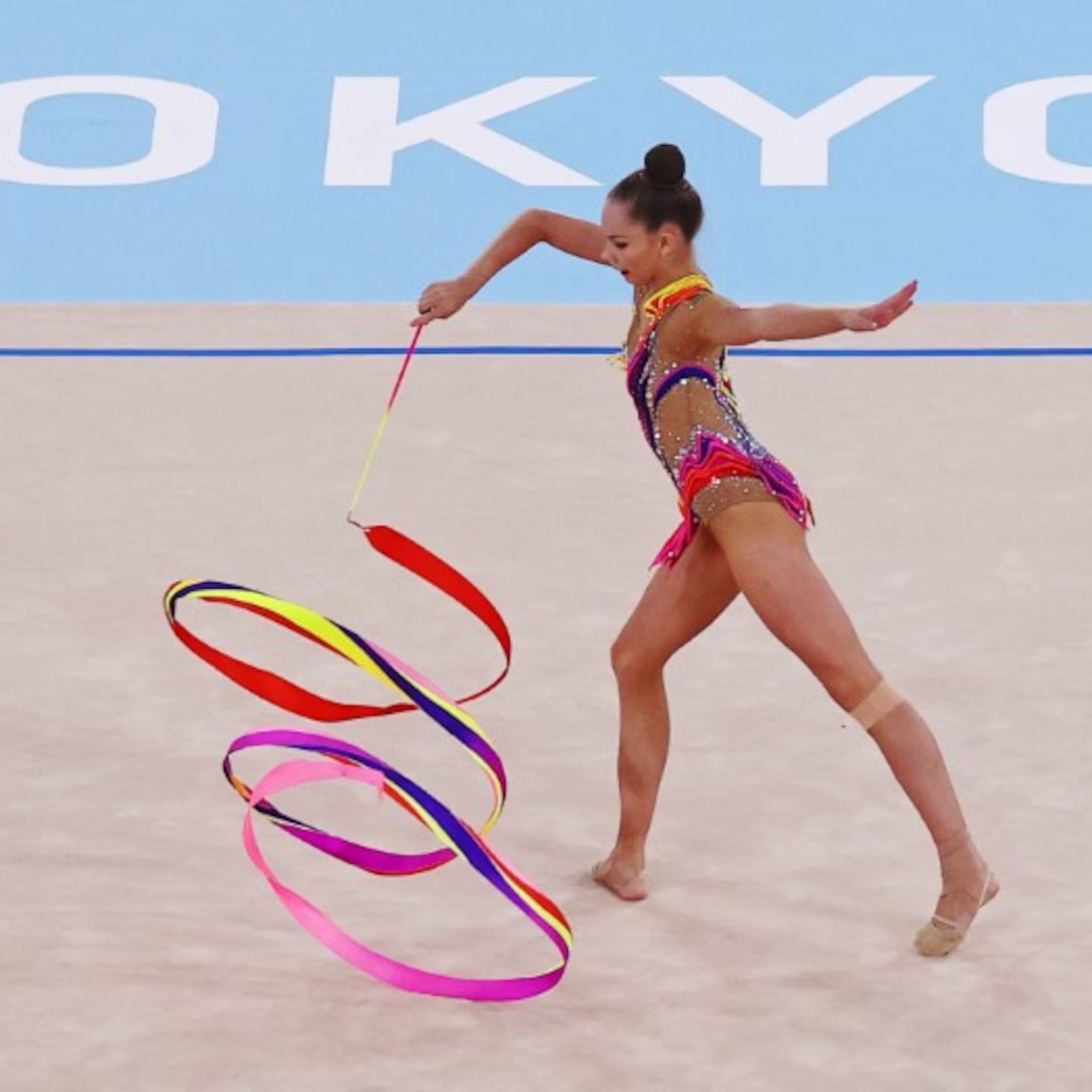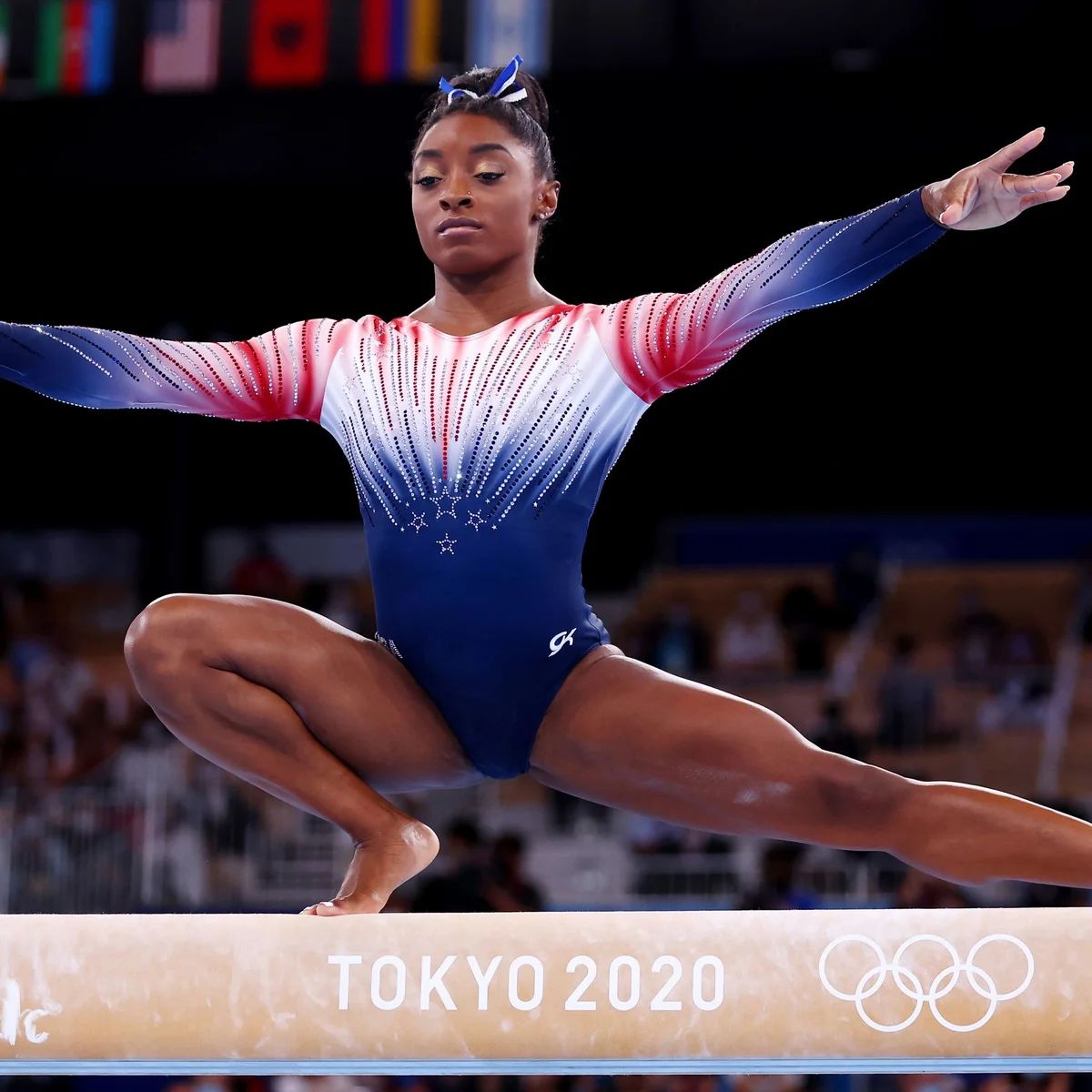
Gymnastics is a dynamic and diverse sport that involves strength, flexibility, and coordination.
There are many different types of gymnastics, each with a unique focus and skill set.
From the elegance of rhythmic gymnastics to the power of artistic gymnastics, this sport offers something for everyone.
This blog will explore 15 different types of gymnastics, highlighting their key features and what makes each special.
List of Different Types of Gymnastics
1. Acrobatic Gymnastics
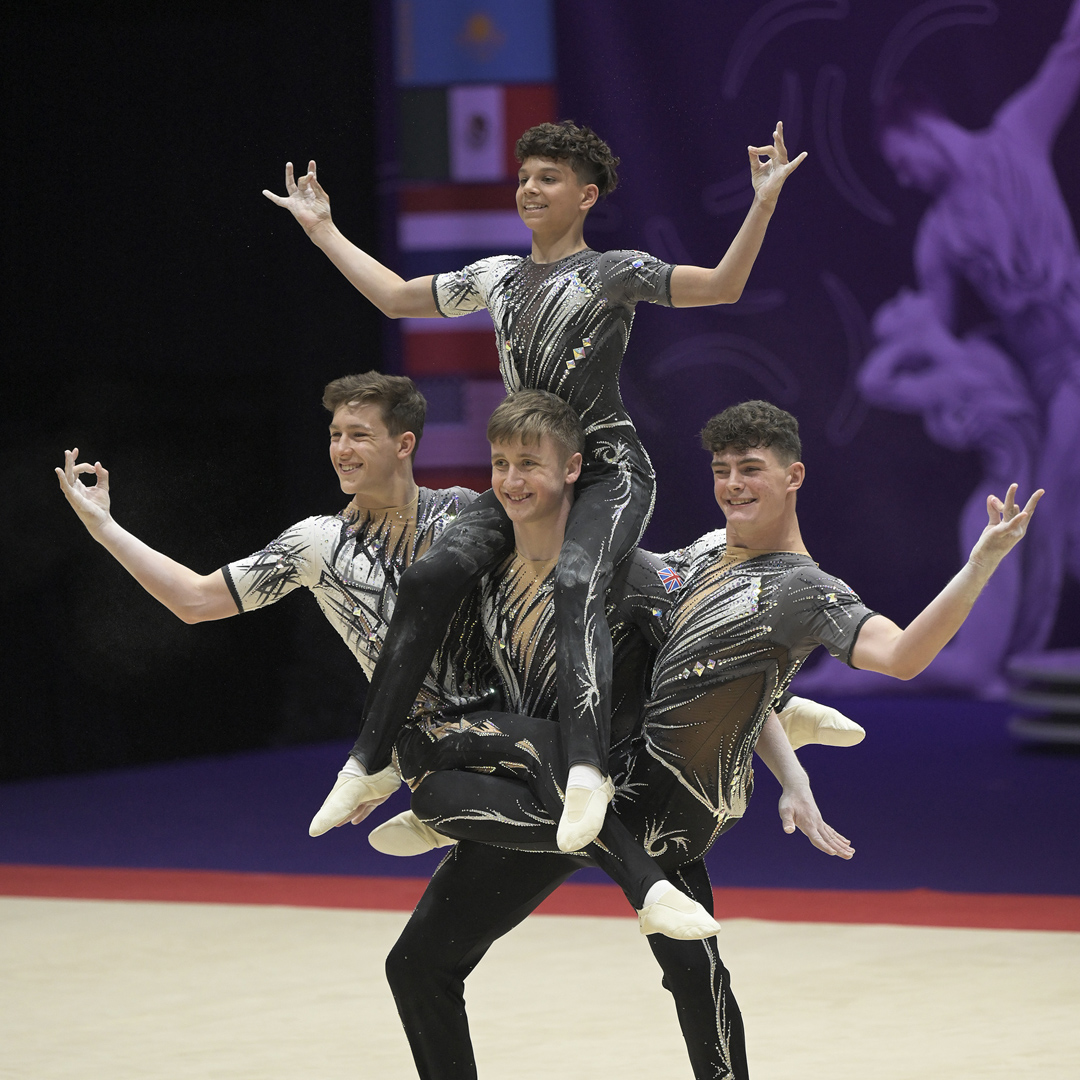
Acrobatic Gymnastics, or acro, is a team-based discipline in which gymnasts perform routines in pairs or groups.
It combines dance, tumbling, and partner lifts, showcasing strength, balance, and coordination.
Acro is known for its intricate choreography and impressive lifts.
- Focus: Team routines with partner lifts
- Key Skills: Strength, balance, coordination
- Common Events: Competitions, performances
2. Rhythmic Gymnastics
Rhythmic Gymnastics combines elements of ballet, dance, and gymnastics with apparatus like ribbons, hoops, and balls.
It is a sport that emphasizes grace, flexibility, and artistic expression.
Rhythmic gymnasts perform routines choreographed to music.
- Focus: Graceful movements with apparatus
- Key Skills: Flexibility, coordination, artistry
- Common Events: Competitions, exhibitions
3. Trampoline

Trampoline gymnastics involves performing acrobatic moves while bouncing on a trampoline.
Gymnasts execute flips, twists, and other aerial maneuvers, often reaching impressive heights.
This type of gymnastics requires precision and control.
- Focus: Aerial maneuvers on a trampoline
- Key Skills: Control, timing, acrobatics
- Common Events: Competitions, shows
4. Artistic Gymnastics
Artistic Gymnastics is the most recognized form of gymnastics.
It consists of individual performances on apparatus like the balance beam, rings, and vault.
It is divided into men’s and women’s events, each with its apparatus.
Artistic gymnastics emphasizes strength, precision, and artistry.
- Focus: Individual routines on apparatus
- Key Skills: Strength, precision, balance
- Common Events: Olympic Games, world championships
5. Aerobic Gymnastics
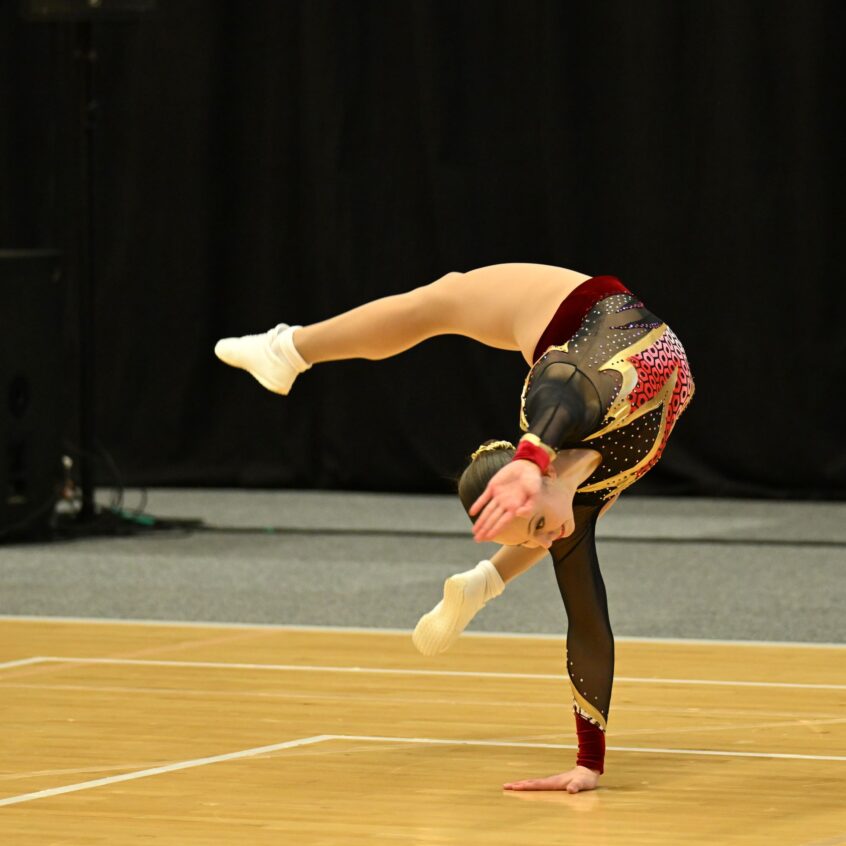
Aerobic Gymnastics is a high-energy discipline in which gymnasts perform continuous and complex movements to fast-paced music.
It combines elements of dance and aerobic exercise and requires stamina and coordination.
Routines are often fast and dynamic.
- Focus: High-energy, continuous movements
- Key Skills: Stamina, coordination, rhythm
- Common Events: Competitions, performances
6. Group Gymnastics
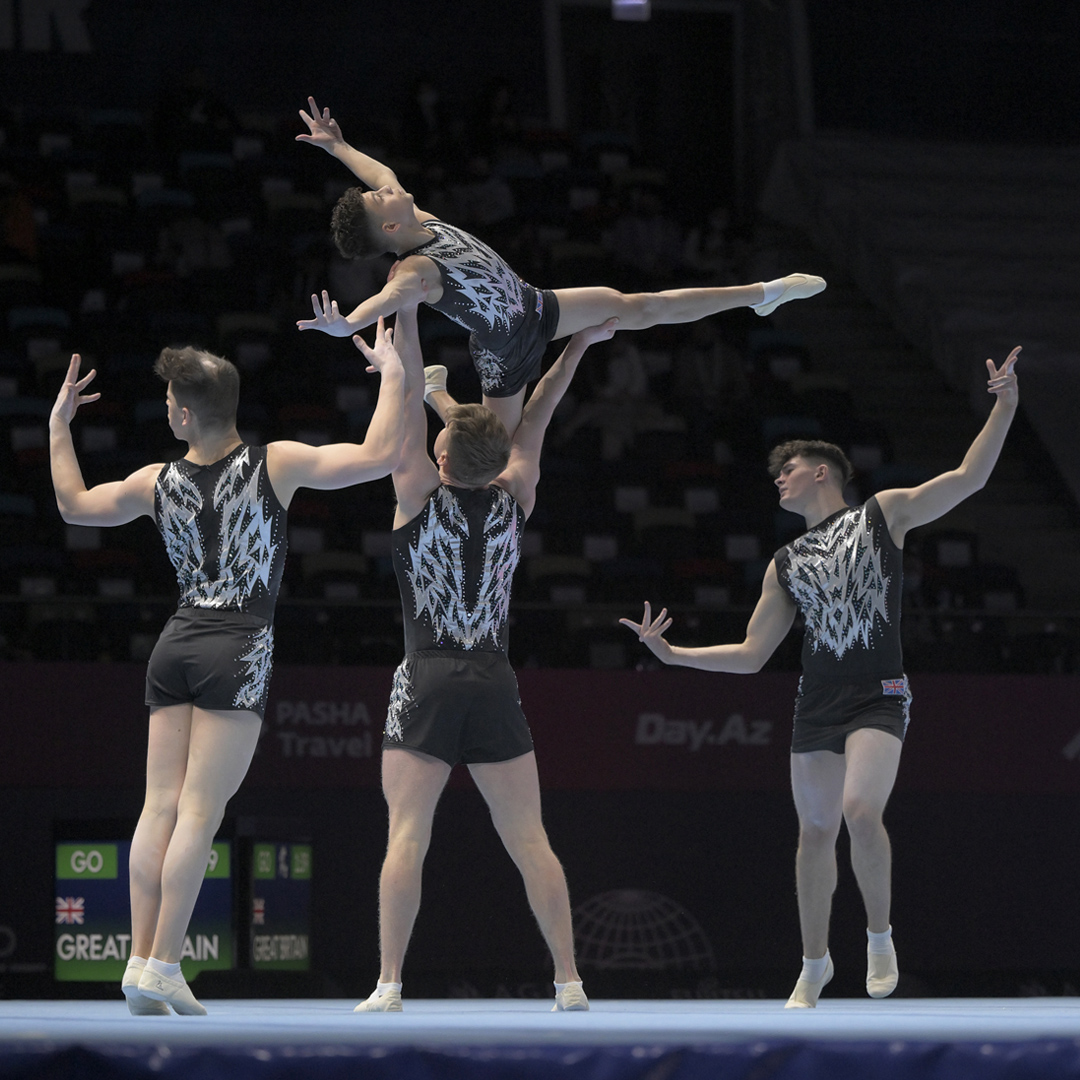
Group Gymnastics involves teams of gymnasts performing synchronized routines on various apparatus or the floor.
It emphasizes teamwork, synchronization, and creativity.
This type of gymnastics is often performed in large groups and is popular in exhibitions and festivals.
- Focus: Team-based synchronized routines
- Key Skills: Teamwork, synchronization, creativity
- Common Events: Exhibitions, festivals
7. Floor Exercise
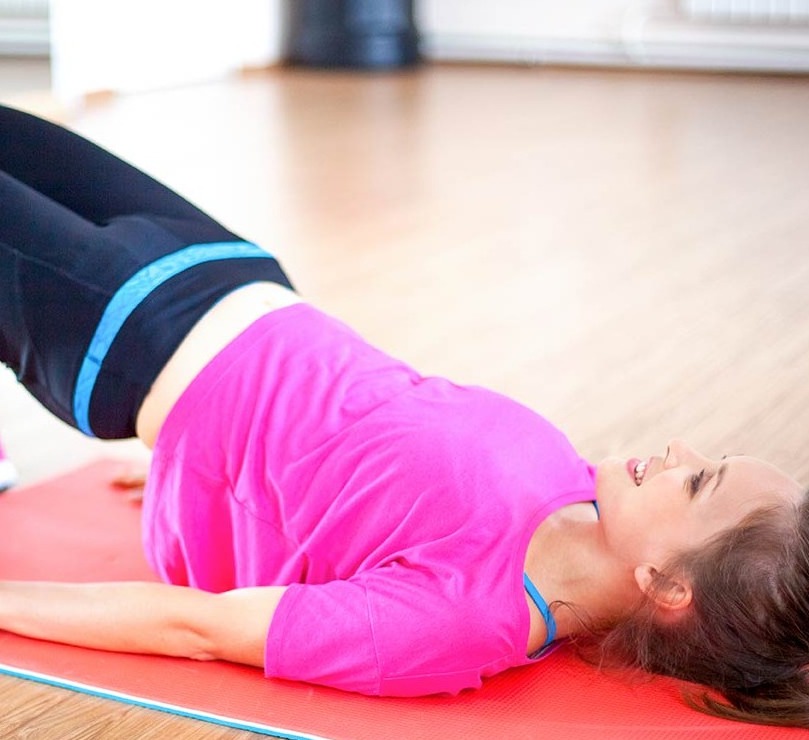
Floor Exercise is a key component of artistic gymnastics.
In floor exercises, gymnasts perform a routine on a mat without apparatus.
The routine includes tumbling passes, dance elements, and acrobatics.
It requires a combination of power, flexibility, and artistry.
- Focus: Routines on a mat with no apparatus
- Key Skills: Tumbling, flexibility, choreography
- Common Events: Artistic gymnastics competitions
8. Parkour
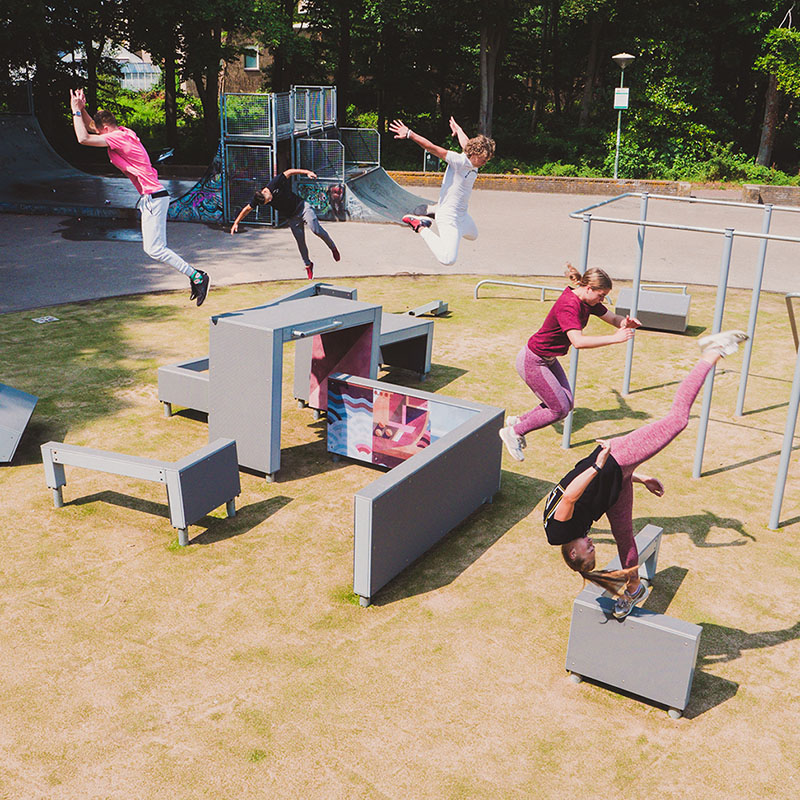
Parkour is a form of gymnastics that involves moving through obstacles efficiently by running, jumping, and climbing.
It emphasizes fluid movement and agility.
Parkour is practiced as a sport and as a form of physical training.
- Focus: Efficient movement through obstacles
- Key Skills: Agility, strength, fluidity
- Common Events: Freerunning competitions, training
9. Parallel Bars
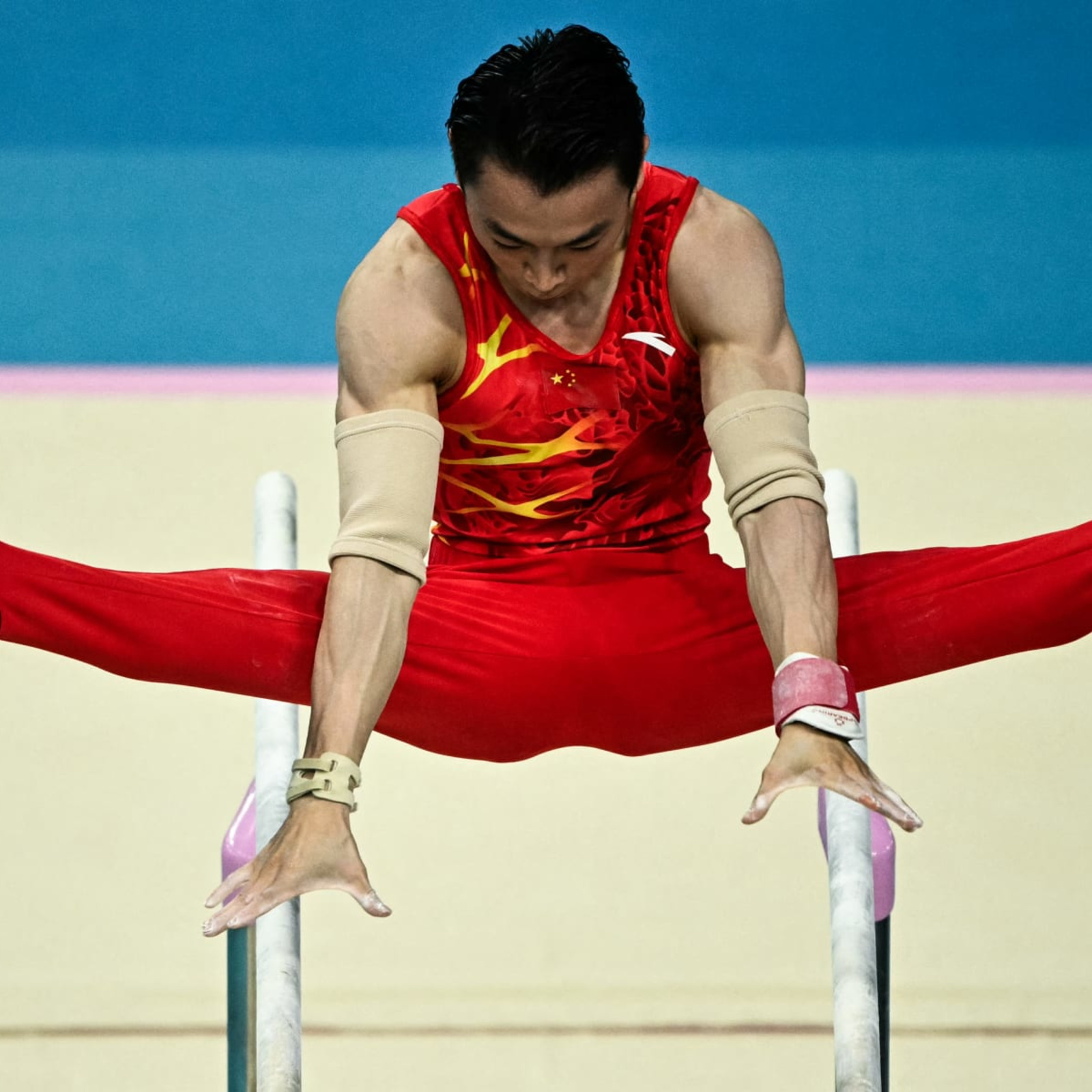
Parallel Bars are an apparatus used in men’s artistic gymnastics.
Gymnasts perform routines that include swings, handstands, and releases between two parallel bars.
This event requires upper body strength and precise timing.
- Focus: Routines on parallel bars
- Key Skills: Upper body strength, timing, control
- Common Events: Men’s artistic gymnastics competitions
10. Pommel Horse
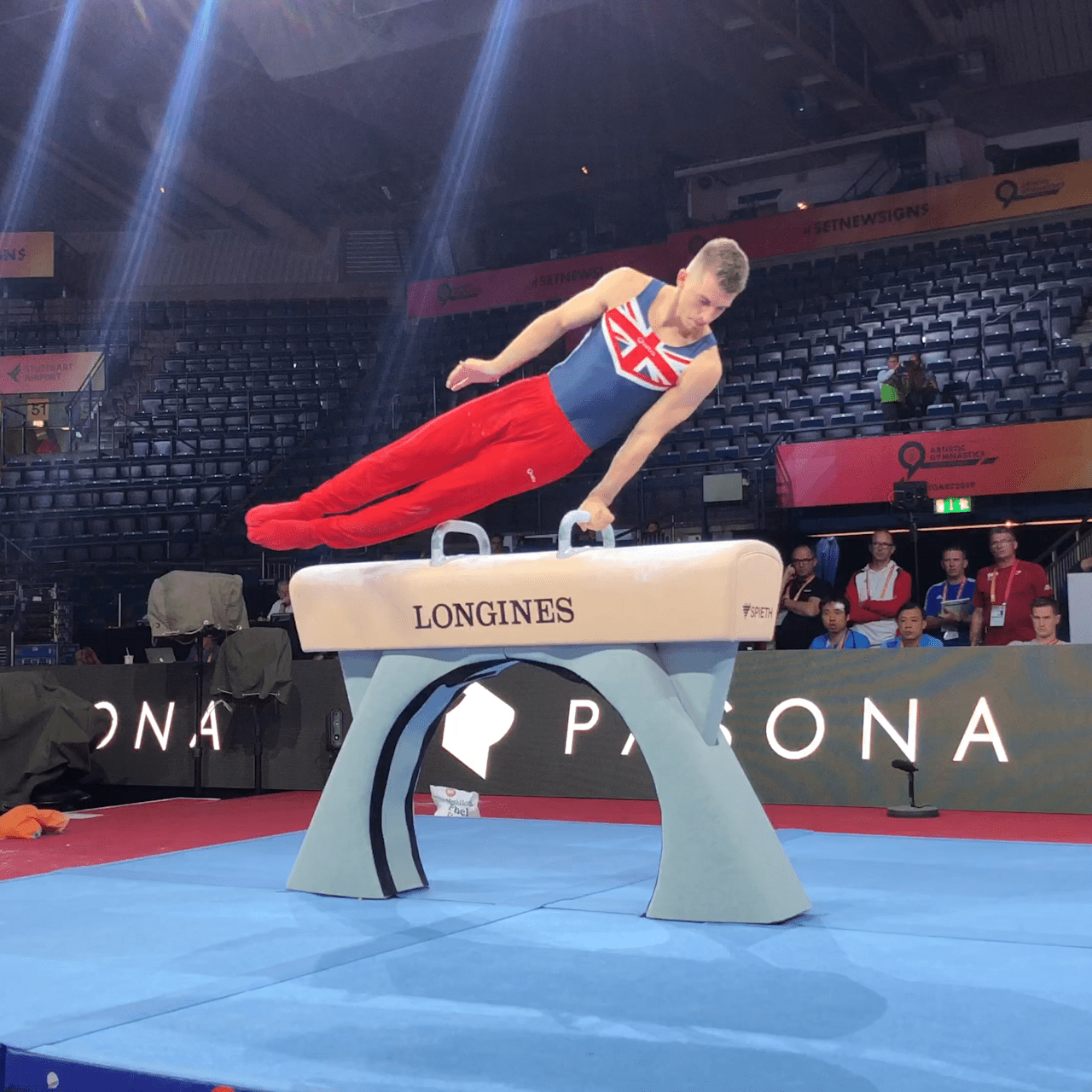
Pommel Horse is another apparatus used in men’s artistic gymnastics.
In this event, gymnasts perform circular motions and other maneuvers using only their arms, requiring a high level of upper body strength, balance, and coordination.
- Focus: Circular motions on a pommel horse
- Key Skills: Upper body strength, balance, coordination
- Common Events: Men’s artistic gymnastics competitions
11. Tumbling

Tumbling is a form of gymnastics that involves performing acrobatic maneuvers on a spring runway.
It includes flips, twists, and handsprings, often in rapid succession.
Tumbling is both a competitive sport and a component of artistic gymnastics.
- Focus: Acrobatic maneuvers on a spring runway
- Key Skills: Power, agility, acrobatics
- Common Events: Competitions, artistic gymnastics routines
12. Rings

Rings are an apparatus used in men’s artistic gymnastics.
In this event, gymnasts perform strength and balance moves while suspended on two rings.
This event is known for requiring immense upper-body strength and control.
Routines often include static holds and swinging elements.
- Focus: Strength and balance on suspended rings
- Key Skills: Upper body strength, control, balance
- Common Events: Men’s artistic gymnastics competitions
13. Vault

Vault is an apparatus used in men’s and women’s artistic gymnastics.
Gymnasts sprint towards a springboard, launch themselves over the vaulting table, and perform acrobatic moves in the air before landing.
This event requires speed, power, and precision.
- Focus: Acrobatic vaulting maneuvers
- Key Skills: Speed, power, precision
- Common Events: Artistic gymnastics competitions
14. Balance Beam
Balance Beam is a women’s artistic gymnastics event in which gymnasts perform routines on a narrow beam.
The routines include dance elements, acrobatic moves, and turns, and they require a high level of balance, poise, and precision.
- Focus: Routines on a narrow beam
- Key Skills: Balance, poise, precision
- Common Events: Women’s artistic gymnastics competitions
15. Uneven Bars
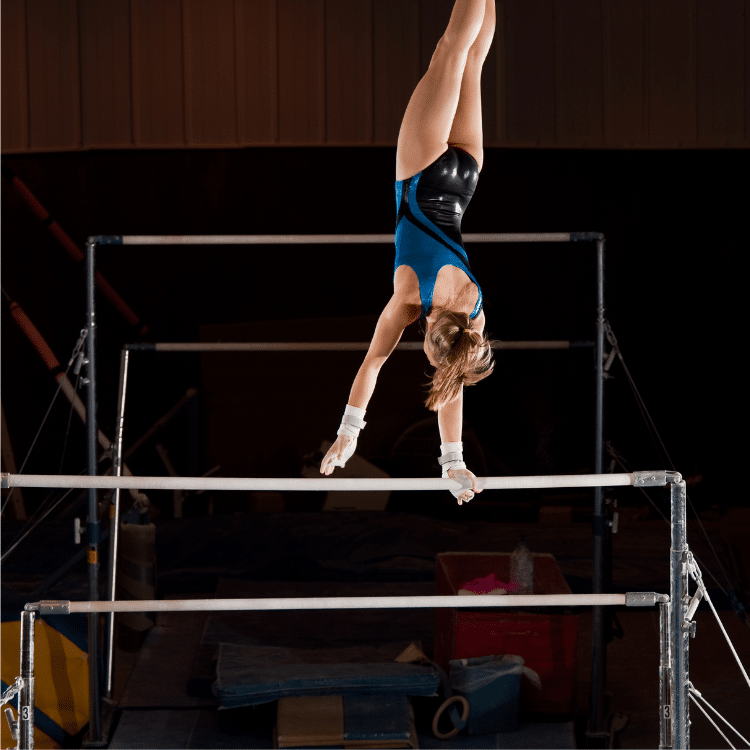
Uneven Bars is a women’s artistic gymnastics apparatus with two bars set at different heights.
Gymnasts perform routines that include swings, releases, and transitions between the bars.
This event requires upper body strength, timing, and coordination.
- Focus: Routines on two uneven bars
- Key Skills: Upper body strength, timing, coordination
- Common Events: Women’s artistic gymnastics competitions
Conclusion
Gymnastics is a sport that offers various disciplines, each with its unique challenges and rewards.
From the team-based acrobatics of Acro to the individual precision required in artistic gymnastics, there’s a type of gymnastics for everyone.
Whether you’re interested in competing, staying fit, or simply appreciating the artistry and athleticism involved, understanding these different types of gymnastics can deepen your appreciation for this versatile and exciting sport.

